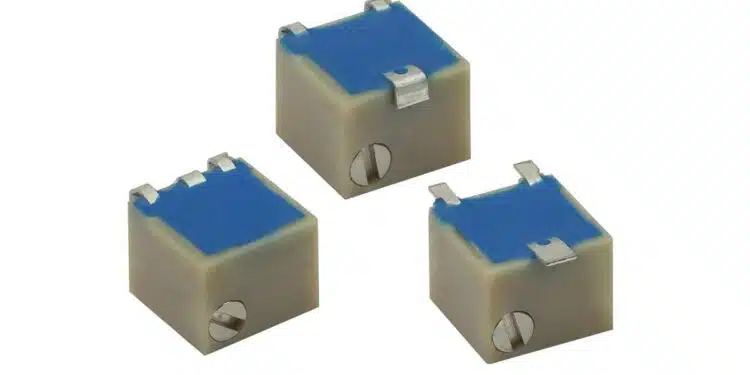Vishay Intertechnology introduces miniature, sealed, industrial-grade multi-turn SMD cermet trimmers for harsh environments.
Designed for space-constrained applications in harsh environments, the Vishay Sfernice TSM41 series devices combine a compact 4 mm by 4 mm footprint with a wide temperature range of -55 °C to +140 °C and IP67 sealing.
Compared to previous-generation devices, the trimmers released today offer a 42 % smaller case size, allowing designers to save board space and optimize package density.
In addition, the TSM41 series allows for fine-tuning of its wide 10 Ω to 1 MΩ resistance range, and a faster setting to time ratio than single-turn trimmers. Offering a 0.25 W power rating at +85 °C, the devices are available in both top and side adjustment styles, providing flexibility for various design requirements.
The TSM41 series can be mounted directly to the PCB, allowing for automated PCB assembly and setting processes – enhancing production efficiency to save time and lower costs – while enabling the components to be placed on both sides of the board. Fully sealed to withstand standard board wash processing, the trimmers ensure reliability in welding equipment, power tools, smoke detectors, and heating, cooling, and ventilation systems.
Samples and production quantities of the TSM41 series are available now, with lead times of 15 weeks.
FEATURES
- 0.25 W at 85 °C
- Industrial grade
- Wide ohmic range (10 Ω to 1 MΩ)
- 0.25 W at 85 °C
- Low contact resistance variation (2 % or 3 Ω)
- Sealed to withstand board wash processing
- 4 mm design meets EIA SMD standard trimmer footprint































